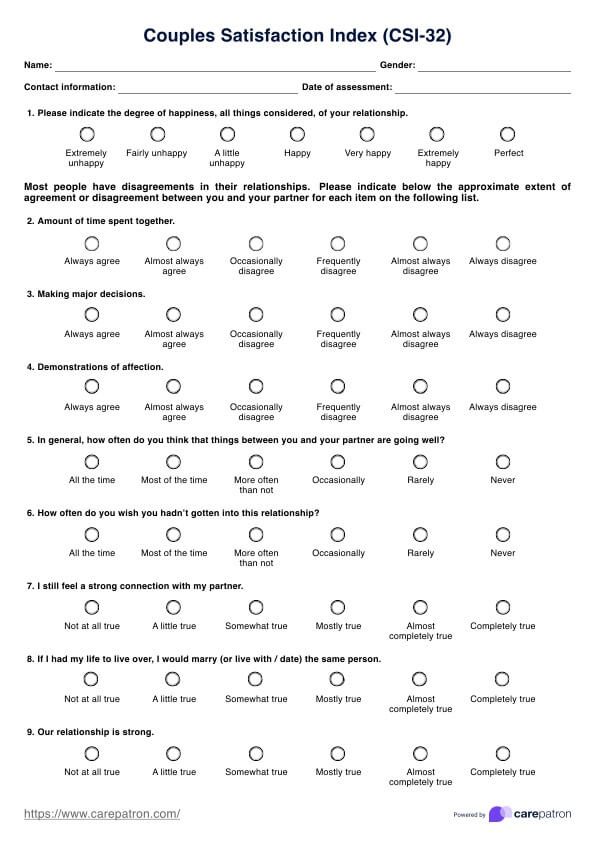Relationship satisfaction can be measured using various tools and methods, including self-report questionnaires and surveys that assess individuals' feelings about their relationship dynamics. Commonly used instruments include the Dyadic Satisfaction Scale or the Couples Satisfaction Index, which evaluate aspects such as emotional connection, communication quality, and overall happiness within the relationship.

Couple Satisfaction Index
Measure relationship satisfaction among clients with the Couple Satisfaction Index. Learn how to administer, score, and interpret results.
Couple Satisfaction Index Template
Commonly asked questions
Effective communication is often considered the best predictor of relationship satisfaction. Other important factors include emotional support, conflict resolution skills, and shared values or goals, all of which contribute to a healthy and fulfilling partnership.
Relationship satisfaction strongly affects mental and emotional health, shaping overall happiness and life quality. Supportive, fulfilling relationships lower stress, improve resilience, and promote better physical health. In contrast, poor relationship satisfaction can contribute to anxiety, depression, and reduced well-being.
EHR and practice management software
Get started for free
*No credit card required
Free
$0/usd
Unlimited clients
Telehealth
1GB of storage
Client portal text
Automated billing and online payments











